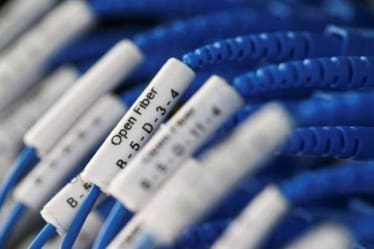By Ankit Agarwal
Covid-19 has driven a unique cultural and structural shift in the society where remote working, learning, and socialising are intertwined in a very interesting way. Network operators witnessed a huge spike in data traffic during 2020, owing to the high data consumption rate during the period. According to a report by Verizon Network, the overall data volume across networks has increased 19% compared to pre-pandemic levels.
Globally, data traffic on broadband networks rose by more than 50%, and average broadband usage approached 0.5 TB (terabyte) at the end of 2020, according to the Q4 2020 OpenVault Broadband Insights (OBVI) report.
Today customers expect faster speeds, lower latency, and greater bandwidth from their service providers. Optical fibre will form the backbone for such robust networks that are future-ready.
The global launch of 5G is impacting optical fibre demand the most. According to the GSMA, mobile operators will spend $890 billion, 80% of their total Capex – on 5G networks over the next five years. 5G will enable data guzzling use cases like immersive entertainment, AI, and services like e-education and e-healthcare. All these require gigabit speeds and ultra-low latency. This requires deep fiberisation in the networks, especially in the network backhaul.
India on the leading edge
Optical fibre plays a very critical role in terms of ensuring high-speed connectivity, and as we move to become a connected society, we must start laying robust telecom infrastructure to realise this vision and increase the envelope of high-speed broadband connectivity. India’s telecommunication industry is capable of meeting this growing demand for bandwidth, but it needs to be supported by the deployment of dense fibre networks. This, in turn, will increase the demand for optical fibre cable. Let us deep dive into the market drivers:
Broadband connectivity for all: India has 600,000 telecom towers providing voice and data connectivity to urban and rural populations– but less than 30% of them are fiberised. This implies a huge scope of adding fibre density.
Data consumption on the rise: Scenarios like work from home and education from home are driving demand for high-speed connectivity not only in tier-1 and tier-2 cities but also in tier-2 and tier-3 cities. Adding to that is consumers spending more time on gaming applications, OTT video, and online shopping.
All these trends will strengthen further as we move ahead in the year 2021-22. Service providers can ensure a great level of customer experience by deploying high-quality fibre.
Government providing requisite impetus: Adequate fibre connectivity can catapult the success of all government digital infra initiatives and ensure access to high-speed broadband for a large set of population. The government’s Digital India programme aims at creating broadband super-highways. The BharatNet project will provide high-speed connectivity to 6 lakh Gram Panchayats (GPs) in the country in a phased manner.
Enterprise’s demand for robust connectivity: For enterprise, fibre-based broadband connectivity means more reliability, lower latency, and higher speed. This resilient connectivity is required for accessing cloud-based enterprise applications, high-speed streaming of critical data, and video conferencing applications.
As we move ahead to embrace the next generation of communications technologies, we need innovative fibre deployments that can cater to the needs of highly resilient on-demand bandwidth for governments, enterprises, and individuals.
The writer is CEO, Connectivity Solutions Business, Sterlite Technologies
